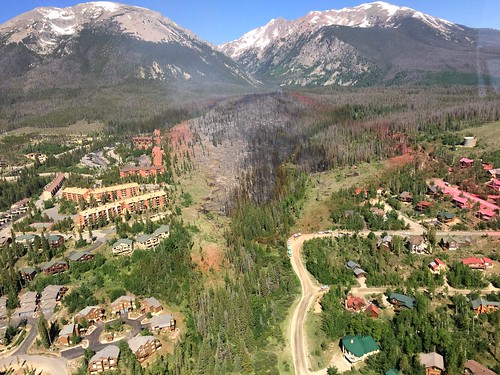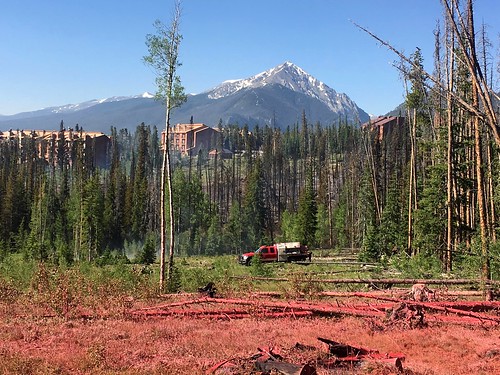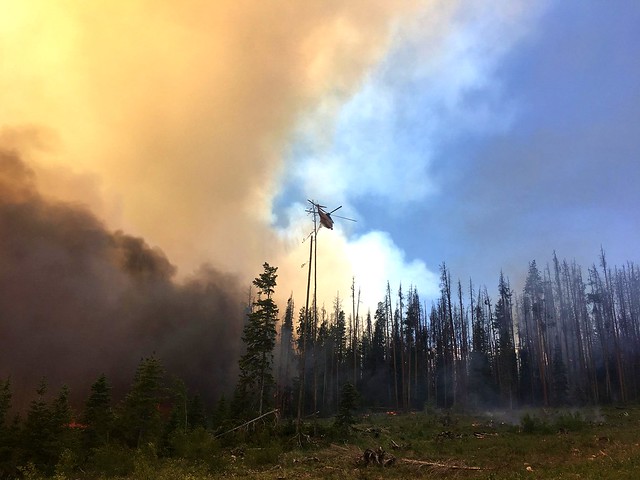
When the Buffalo Fire sparked on the White River National Forest on June 12, the flames stopped short of nearly 1,400 residences near Silverthorne, Colorado. But, it wasn’t just the air support from firefighting helicopters and tankers and the more than 150 firefighters on scene that helped prevent a catastrophe in two small mountain subdivisions. Part of the success can also be attributed to proactive work over the last decade to build fuel breaks and reduce hazardous fuels where homes meet wild lands or what is called the Wildland Urban Interface (WUI).
“The fuel breaks reduced the number of trees available to burn next to homes; gave firefighters safe spots to aggressively fight the fire; and provided for effective fire-retardant drop zones,” said Bill Jackson, district ranger, White River National Forest, USDA Forest Service. “Without the proactive forest treatments, we likely would have lost homes.”

These fuel breaks are 300- to 500-foot wide open spaces developed between the forest and subdivisions where lodgepole pine trees that had been killed by the mountain pine beetle once stood ripe for ignition. The fuel breaks were built as part of larger proactive forest management programs in Summit County and throughout the watershed around the Dillon Reservoir.
“Wildfires don’t know boundaries, so when it comes to forest management in Denver Water’s priority watersheds, we take an all hands, all lands approach,” said Christina Burri, watershed scientist at Denver Water. “By partnering with all the land owners, from federal, state, local and private, we’re able to better protect all of our interests from catastrophic wildfires and extend our investment and reach throughout the entire area.”
One such partnership is the From Forests to Faucets program, which is a forest management partnership between Denver Water and the Rocky Mountain Region of the Forest Service. Since 2010, Denver Water and the USDA Forest Service have invested approximately $33 million for treatments across 70,000 acres.
“From Forests to Faucets helps us identify areas where we have common interests in limiting high intensity wildfires and improving forest and watershed health,” Jackson said. “The partnership helped us stretch our funds to treat more acres in Summit County.”
In this case, the Forest Service was able to invest in 900 acres of hazardous fuels reduction projects next to the Wildernest and Mesa Cortina neighborhoods above Silverthorne- projects that saved an estimated $913 million worth of homes and infrastructure from the Buffalo Fire.
The Colorado State Forest Service and the Natural Resources Conservation Service joined From Forests to Faucets in 2017 to allow forest managers to take even more of an “all hands, all lands” approach as funds will go to forest treatments on non-federal and private lands as well as national forests.

